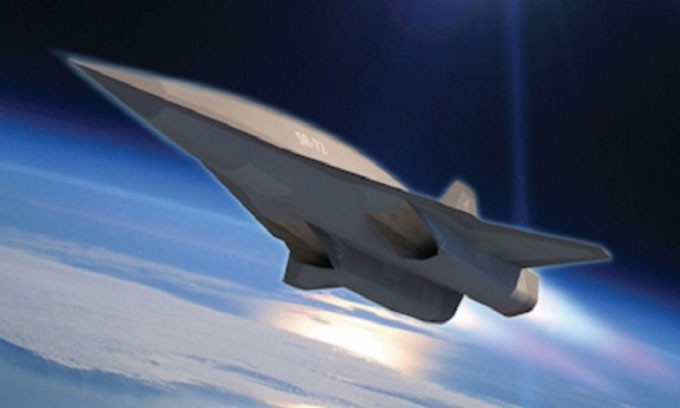The Lockheed Martin SR-72 will become the fastest aircraft in the world when it undergoes test flights in 2025.
SR-72 will be the successor to the SR-71 Blackbird, the fastest manned aircraft in history that broke the speed record in 1974 and was retired in 1998. The SR-72, nicknamed “Son of Blackbird”, is designed by Lockheed Martin to be a reusable unmanned hypersonic aircraft, specialized for reconnaissance, surveillance, and strike missions.

Design of the SR-72 aircraft. (Photo: Lockheed Martin)
Hypersonic aircraft operate at speeds of at least five times the speed of sound (Mach 5), which is equivalent to over 6,200 km/h. Aircraft that fly faster than the speed of sound but do not reach Mach 5 are typically referred to as supersonic aircraft.
The SR-72 allows for attacking targets in dangerous environments, which may be too risky for slower piloted aircraft.
The SR-72 project was announced in 2013 but took several years to develop. It is estimated that the SR-72 will have a maximum speed of 7,400 km/h, nearly double that of its predecessor. Theoretically, this aircraft could evade current jet fighters with its super-fast speed.
A new turbine-based combined cycle propulsion system (TBCC) significantly enhances the aircraft’s speed. Combining TBCC with current dual-mode turbojet engines will enable the SR-72 to move faster than any existing aircraft, potentially circling the Earth in just a few hours. According to Lockheed Martin, the SR-72 prototype is expected to take flight in 2025, with operational capabilities anticipated in the 2030s.
Hypersonic aircraft technology is garnering significant global attention. The National Aeronautics and Space Administration (NASA) is also developing the X-59 quiet supersonic aircraft, which is scheduled for its first flight next year.

















































